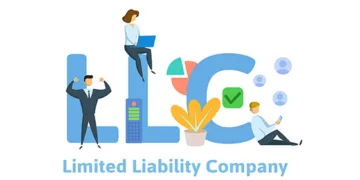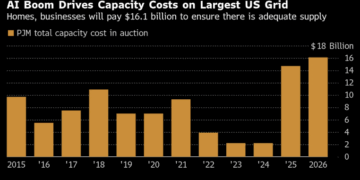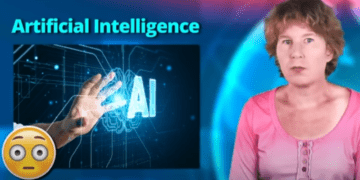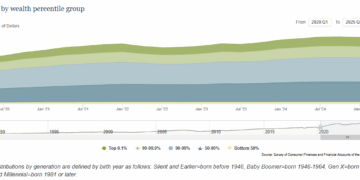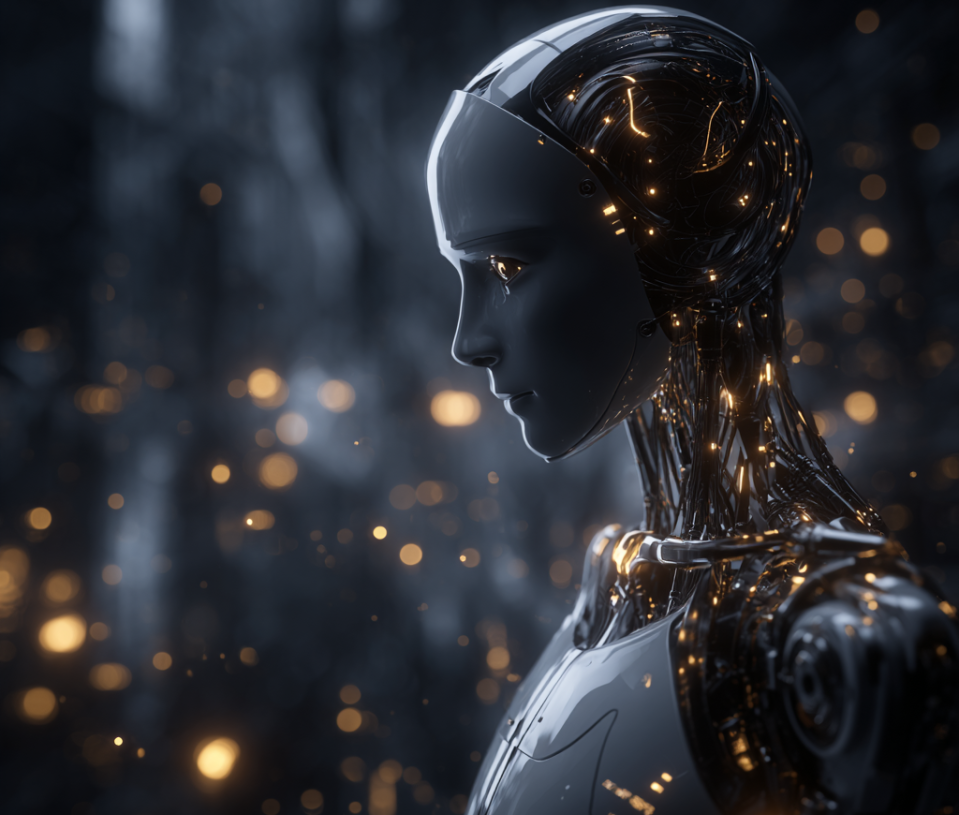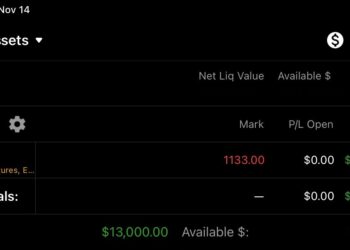I recently came across some compelling thoughts from Sam Dogen at Financial Samurai that stopped me in my tracks. His perspective on the AI revolution resonated deeply, particularly his observation about missing the dot-com opportunity in 2000 and his determination not to let history repeat itself. Dogen’s personal experience—watching his father lose an editing job to AI and witnessing the dramatic shift in Google search traffic—crystallizes something many of us are feeling but perhaps not yet acting upon.
His core message deserves serious consideration: “Sooner or later, AI will come for your job. The only real ways to protect yourself: become an AI product expert and invest in AI.”
The Dot-Com Parallel That Actually Makes Sense
The comparison to the dot-com era is inevitable, but this time the fundamentals are fundamentally different. In 2000, we were investing in potential—companies burning cash on the promise that the internet would change everything. The infrastructure was nascent, adoption was limited, and most businesses were still figuring out basic e-commerce.
Today’s AI revolution presents a starkly different landscape. We are not investing in potential; we are investing in present reality. Companies are already integrating AI into core operations, replacing entire workflows, and demonstrating measurable productivity gains. The infrastructure exists, the adoption is accelerating, and the economic impact is quantifiable.
Consider the key differences:
Dot-Com Era (2000): Internet adoption was growing but limited. Most companies were experimenting with online presence. Revenue models were often unclear or non-existent. Infrastructure was expensive and unreliable.
AI Era (2024-2025): AI adoption is exploding across industries. Companies are achieving immediate cost savings and efficiency gains. Revenue impact is measurable and substantial. Cloud infrastructure makes deployment accessible and scalable.
The Personal Reality Check
Let me share something that hit close to home recently. My cousin works—worked—as a customer service supervisor for a major telecom company. Been there fifteen years, man. Knew every policy, every system, could handle the most difficult customers like it was nothing. Last month, they laid off sixty percent of his department. Not because business was slow, but because their new AI system was handling three times the call volume with half the staff.
He called me up, frustrated as hell, saying “Yo, I thought this AI stuff was just hype, you know what I’m saying? But now I’m sitting here looking at unemployment forms while some computer program is doing what took me years to learn.”
That conversation changed my perspective completely. This is not some distant future scenario—this is happening right now, to real people, in real jobs.
The Technical Reality Behind the Hype
The current AI capabilities represent a fundamental breakthrough in computational reasoning and language processing. Unlike previous automation waves that replaced manual labor or simple cognitive tasks, large language models and multimodal AI systems can now perform complex reasoning, creative tasks, and professional-level analysis across diverse domains.
The technical progression follows a clear trajectory. Natural language processing has achieved human-level performance in many tasks. Computer vision can interpret and analyze visual content with remarkable accuracy. Code generation and debugging capabilities are approaching professional standards. These are not incremental improvements—these represent categorical leaps in machine capability.
The economic implications are equally clear. Companies implementing AI solutions report productivity gains ranging from thirty to three hundred percent in specific workflows. Cost reductions are immediate and substantial. Competitive advantages are becoming entrenched as early adopters pull ahead of traditional competitors.
Investment Strategy: Beyond the Obvious Players
While everyone focuses on the obvious AI giants, the real opportunity lies in understanding the entire ecosystem. Direct investment in companies like NVIDIA, Microsoft, and Google represents one approach, but the AI revolution extends far beyond these household names.
The infrastructure layer presents compelling opportunities. Cloud computing providers, semiconductor manufacturers, and data center operators form the foundation supporting AI advancement. These companies benefit from sustained demand regardless of which specific AI applications succeed or fail.
The application layer offers higher risk and higher reward opportunities. Companies successfully integrating AI into specific industry solutions—healthcare diagnostics, financial analysis, legal document processing—represent the next wave of value creation.
The services and education sector presents an interesting paradox. While AI threatens many traditional roles, it creates massive demand for AI implementation services, training programs, and specialized consulting. Companies helping other businesses navigate AI adoption represent a growing market opportunity.
The Educational Investment Dilemma
Dogen raises a provocative point about educational investment that demands serious consideration. Parents spend enormous sums preparing children for careers that may not exist by graduation. The traditional college-to-career pipeline faces unprecedented disruption.
However, this does not suggest abandoning education entirely. Instead, it argues for strategic educational investment focused on AI-resistant skills and AI-complementary capabilities. Critical thinking, creative problem-solving, emotional intelligence, and complex interpersonal skills remain valuable. Technical literacy and AI tool proficiency become essential rather than optional.
The most practical approach combines traditional educational foundation with aggressive AI skill development. Children should learn to work with AI tools, understand AI capabilities and limitations, and develop skills that enhance rather than compete with artificial intelligence.
Personal Protection Strategy
Beyond investment opportunities, personal career protection requires immediate action. Becoming an AI product expert does not necessarily mean becoming a programmer or data scientist. It means understanding how AI tools can enhance your current role, identifying AI implementation opportunities within your industry, and positioning yourself as the person who bridges human expertise with artificial intelligence capabilities.
I started experimenting with AI tools in my own work six months ago. Initially skeptical, I now use AI for research, writing assistance, data analysis, and strategic planning. The productivity gains are substantial, but more importantly, I understand how these tools think, where they excel, and where they fail. This knowledge has become increasingly valuable in professional settings.
The Timing Question
Market timing remains the eternal challenge, but several indicators suggest we are still in the early phases of AI adoption. Enterprise implementation lags consumer adoption by significant margins. Regulatory frameworks are still developing. Infrastructure investment continues expanding. Most importantly, many industries have barely begun exploring AI integration.
The risk of waiting likely exceeds the risk of early investment. Unlike the dot-com era, where companies were burning cash on unproven business models, today’s AI leaders are generating revenue, reducing costs, and demonstrating clear competitive advantages.
Conclusion: Action Over Analysis
Sam Dogen’s reflection on missing the dot-com opportunity resonates because most of us have similar regrets about investment opportunities we recognized but failed to act upon. The AI revolution presents a similar moment, but with stronger fundamentals and clearer trajectories.
The question is not whether AI will reshape the economy—that process is already underway. The question is whether we will position ourselves as beneficiaries or casualties of this transformation.
The evidence supports aggressive action. Invest in AI-related opportunities across the ecosystem. Develop AI expertise relevant to your industry. Prepare your children for an AI-integrated economy. Most importantly, act now while the transformation is accelerating rather than waiting for certainty that may never come.
The train, as Dogen notes, is indeed leaving the station. The choice is whether to board it or watch it disappear into the distance.
Click here to check out Sam Dogen’s article over at Financial Samurai.
For further content, check out these articles:
















